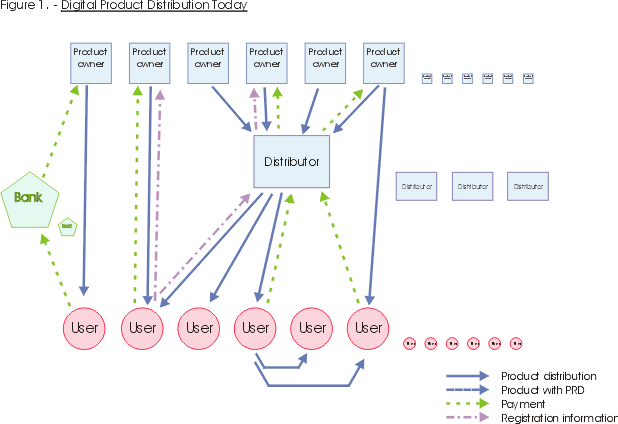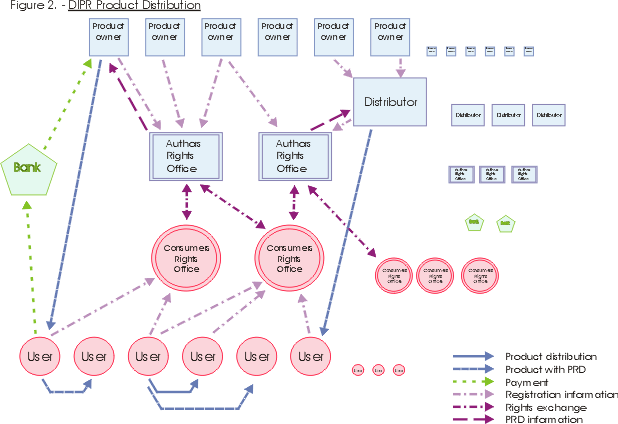|
I now describe how the identifications
will be applied to digital products and how the DIPR system will
regulate these products.
The unique identifications for the creator and the consumer will,
together, form a Property Rights Descriptor (PRD) field added to
the digital copy of the product that in turn will form a unique
manifestation of the intellectual product. The secure databases,
which make a record of the identifications, form a system of 'administrative
offices' added to the Internet structure.
To see how the above structure will evolve, first
regard the following diagram that outlines the distribution of digital
products over the Internet today:

Figure 1: Digital Product Distribution Today
The desired product distribution pattern is that
digital products move directly from the product owner or via their
distributor to the users, or consumers, while payments flow back
to reward the creator. The secondary distribution of products between
users and the flow of personal user information back to the product
owners are less desirable aspects of the current situation.
This next diagram shows product distribution in
the Distributed Intellectual Property Rights environment with its
system of administrative offices:

Figure 2: Digital Product Distribution DIPR
The fundamental feature of this new system is
the administrative offices, of which there are two types (the Author
Rights Office and the Consumer
Rights Office), and there can be any number of each type
of office (In another section I
propose a theory, based on evolutionary principles, that emphasizes
the need for the dual office structure and the use of two identifiers
for each product manifestation). This office structure helps limit
the amount of personal information that flows back to the product
owners and ensures that most of the products will be identified
with a Property Rights Descriptor (PRD) as I will explain
later.
|



